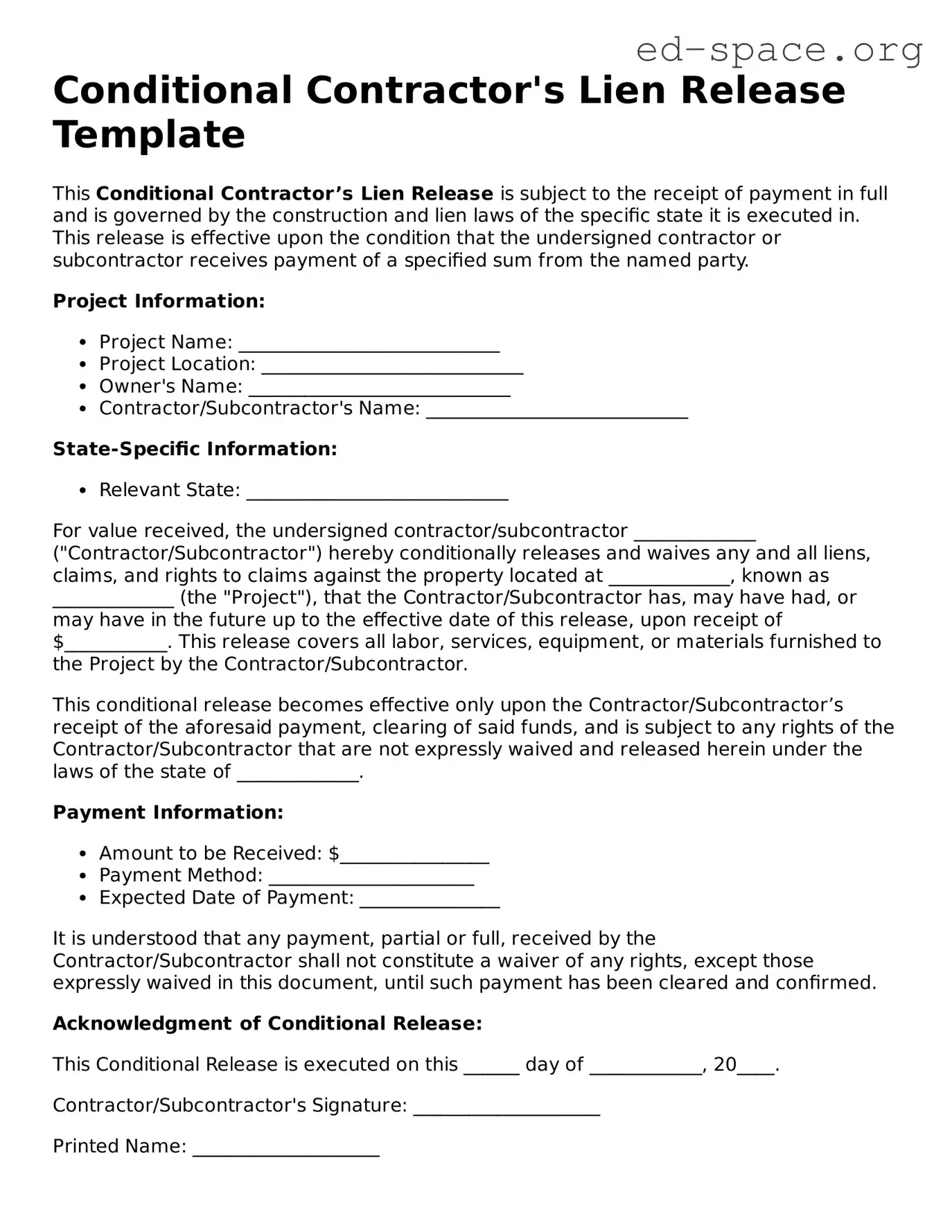Conditional Contractor's Lien Release Template
This Conditional Contractor’s Lien Release is subject to the receipt of payment in full and is
governed by the construction and lien laws of the specific state it is executed in. This
release is effective upon the condition that the undersigned contractor or subcontractor
receives payment of a specified sum from the named party.
Project Information:
- Project Name: ____________________________
- Project Location: ____________________________
- Owner's Name: ____________________________
- Contractor/Subcontractor's Name: ____________________________
State-Specific Information:
- Relevant State: ____________________________
For value received, the undersigned contractor/subcontractor _____________
("Contractor/Subcontractor") hereby conditionally releases and waives any and all liens, claims,
and rights to claims against the property located at _____________, known as
_____________ (the "Project"), that the Contractor/Subcontractor has, may have had, or may
have in the future up to the effective date of this release, upon receipt of $___________. This
release covers all labor, services, equipment, or materials furnished to the Project by the
Contractor/Subcontractor.
This conditional release becomes effective only upon the Contractor/Subcontractor’s receipt
of the aforesaid payment, clearing of said funds, and is subject to any rights of the Contractor/Subcontractor
that are not expressly waived and released herein under the laws of the state
of _____________.
Payment Information:
- Amount to be Received: $________________
- Payment Method: ______________________
- Expected Date of Payment: _______________
It is understood that any payment, partial or full, received by the Contractor/Subcontractor
shall not constitute a waiver of any rights, except those expressly waived in this document,
until such payment has been cleared and confirmed.
Acknowledgment of Conditional Release:
This Conditional Release is executed on this ______ day of ____________, 20____.
Contractor/Subcontractor's Signature: ____________________
Printed Name: ____________________
Title: ____________________
This document is subject to review and should be considered valid upon the legal advice of
a lawyer. It is crucial to ensure that all payments are made and cleared as specified, to
sustain the enforceability of this release.
